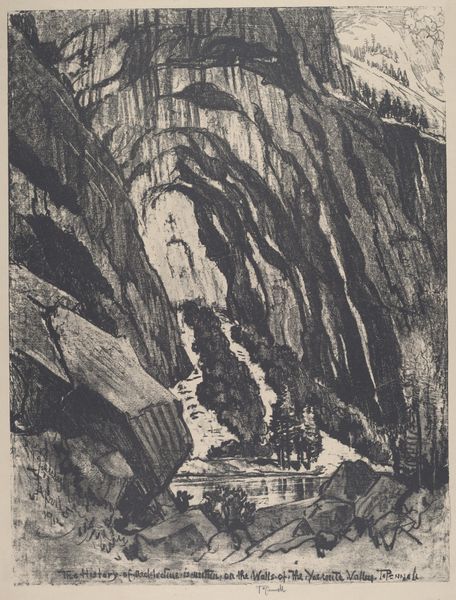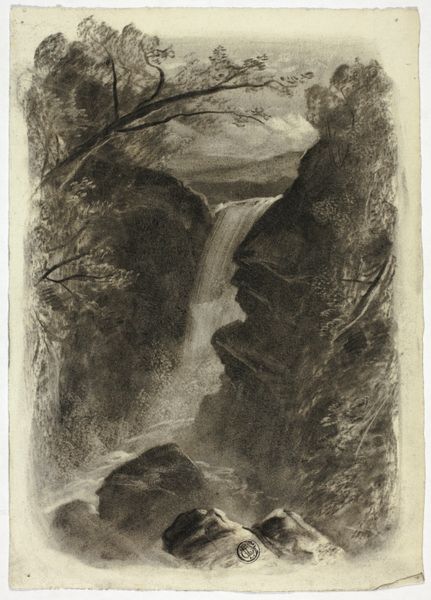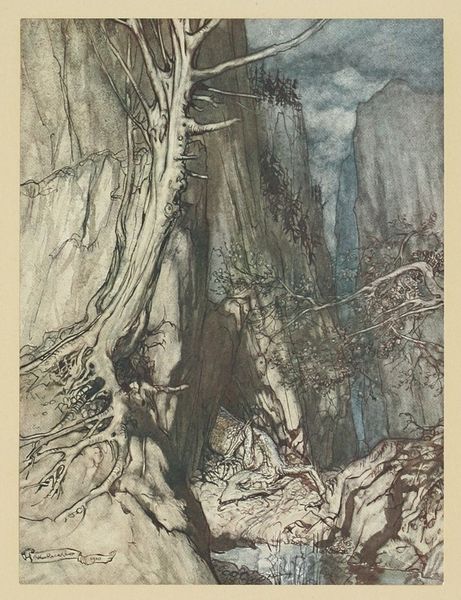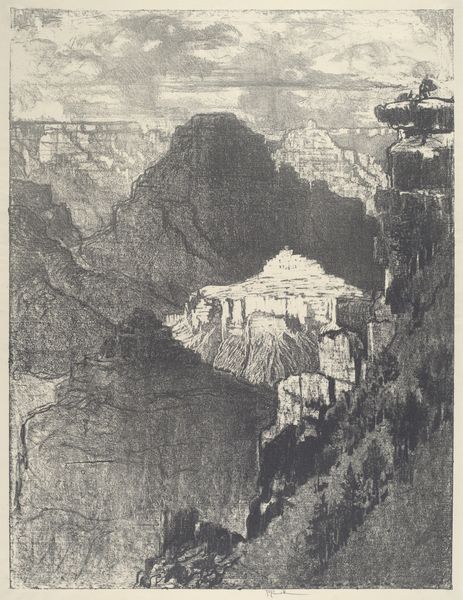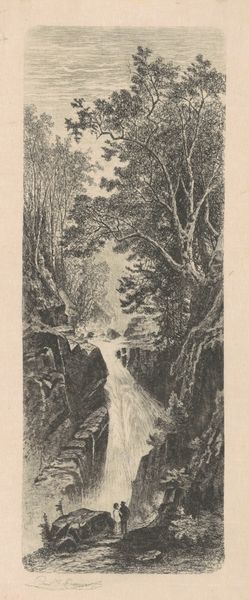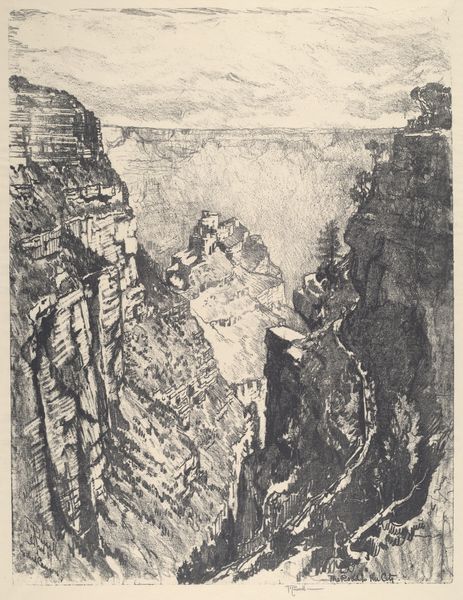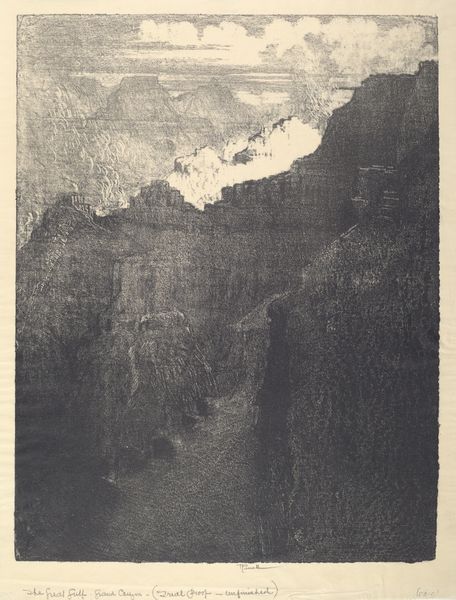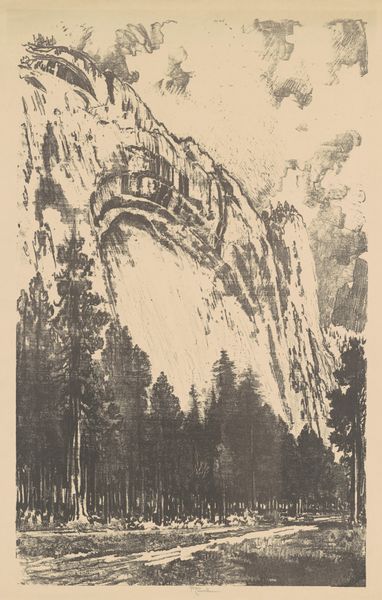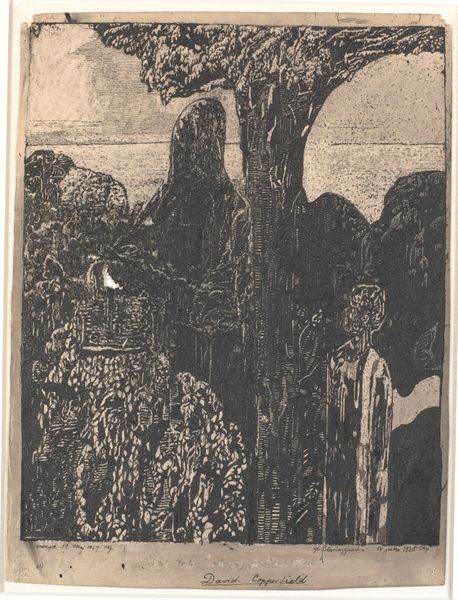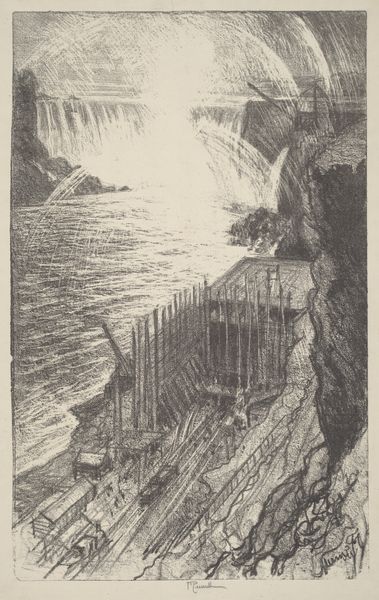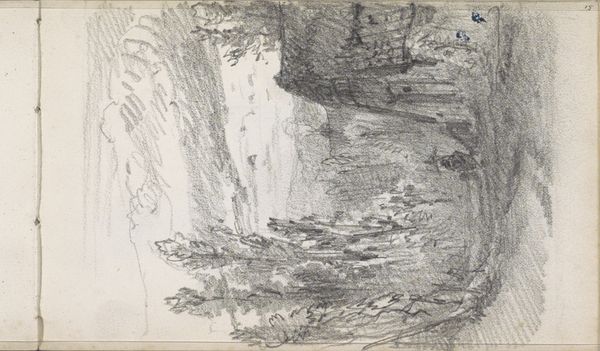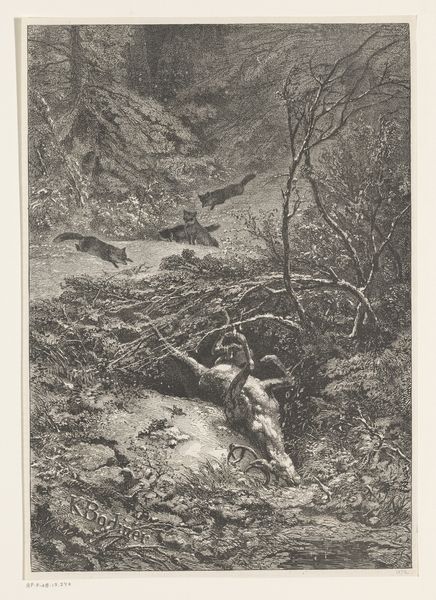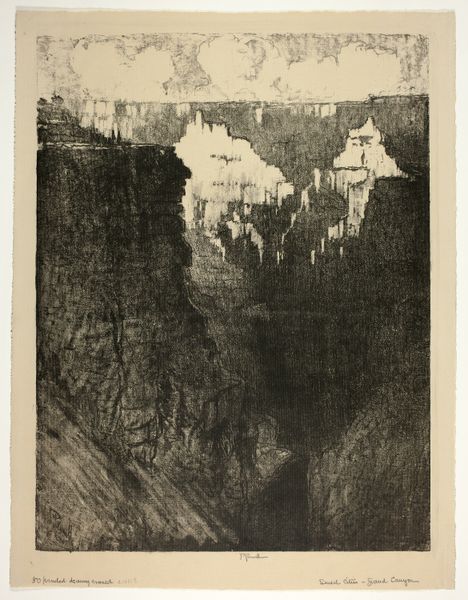
print, etching, graphite
# print
#
etching
#
landscape
#
graphite
#
realism
Copyright: National Gallery of Art: CC0 1.0
Editor: This is Joseph Pennell's "Lower Falls, Yosemite," an etching and graphite print from 1912. I'm really struck by the sharp contrast and the almost industrial feel in how he renders such a natural scene. What elements of the materials or process stand out to you? Curator: The layering of etching and graphite is critical. Pennell's choices speak volumes about the industrialization influencing artistic vision. Yosemite, a natural wonder, is translated through techniques born of mass production. Look at how the falls are depicted—a near vertical cascade, visually flattened, reflecting perhaps the mechanization of nature's power. Editor: That's interesting, I hadn't considered the 'flattening' as mechanization. So, you're suggesting that the very process used to create the artwork shapes our perception of the subject itself? Curator: Precisely. Etching, typically used for reproduction, transforms the sublime landscape into something reproducible, consumable. The graphite adds a layer of perceived "realism," almost like a document. Editor: So, the combination presents nature as something both powerful and easily accessible. What would this imply about consumerism back in 1912? Curator: It reveals a culture grappling with its relationship to the environment, starting to commodify even its grandest features. Think of the railroads bringing tourists to Yosemite – and the print media selling the image back home. Editor: That makes sense. Seeing it as part of this cycle of production and consumption definitely gives me a different appreciation for the artwork and it connects artistic technique with wider social trends. Curator: And for me, seeing your initial reaction evolve highlights how much materiality dictates the message within landscape art.
Comments
No comments
Be the first to comment and join the conversation on the ultimate creative platform.
